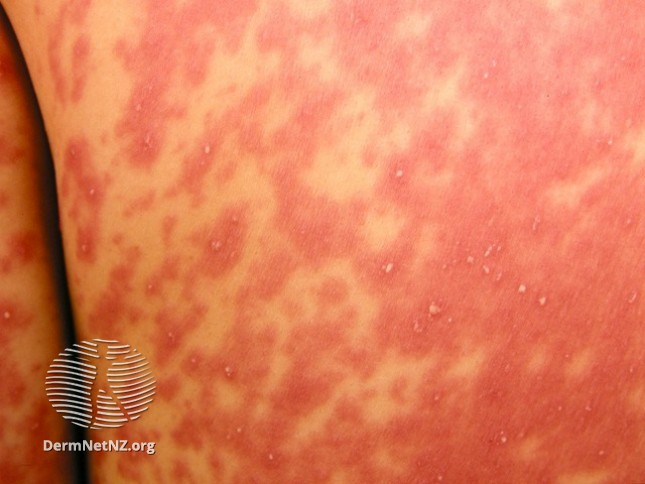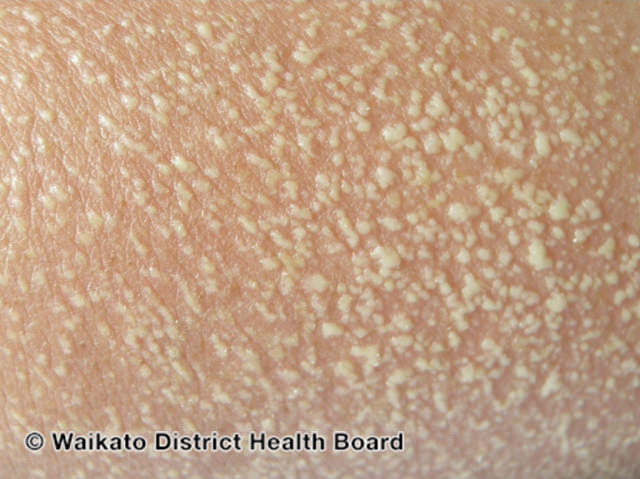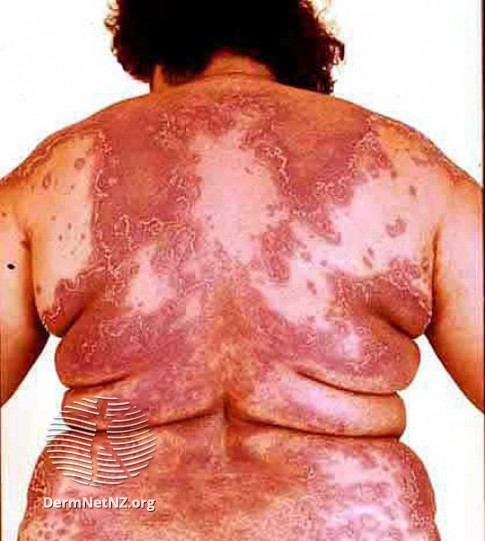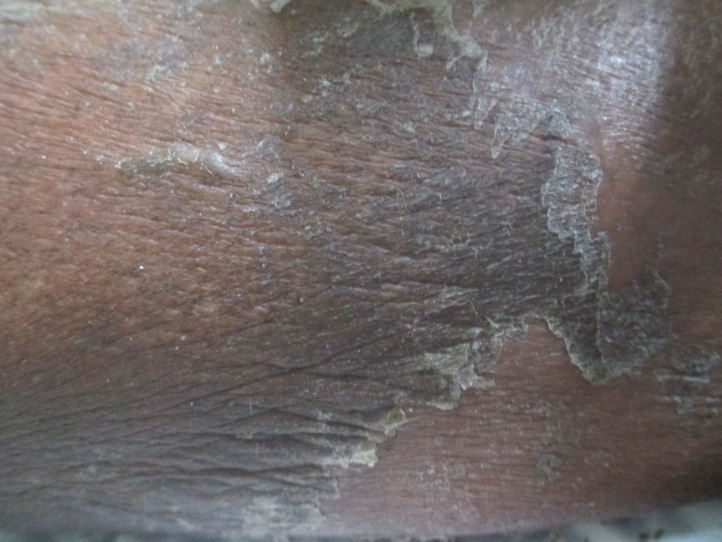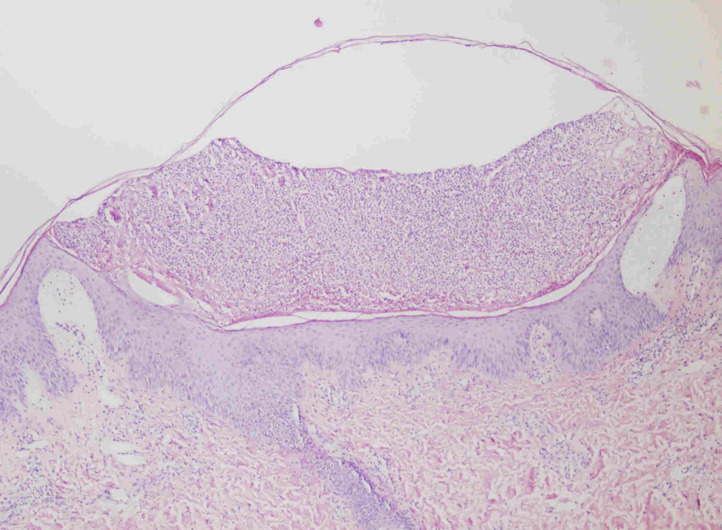1/
#AGEP (ACUTE GENERALIZED EXANTHEMATOUS PUSTULOSIS)!
A #medtwitter #dermtwitter #tweetorial! #MedEd #FOAMEd
This is a drug reaction that we can see on inpatients, with an exam full of pustules!
Let& #39;s start with a question - How long after drug exposure does AGEP appear?
#AGEP (ACUTE GENERALIZED EXANTHEMATOUS PUSTULOSIS)!
A #medtwitter #dermtwitter #tweetorial! #MedEd #FOAMEd
This is a drug reaction that we can see on inpatients, with an exam full of pustules!
Let& #39;s start with a question - How long after drug exposure does AGEP appear?
2/
The correct answer is 24-48 hours!
The other answers are typical time frames for other types of reactions.
Urticaria usually manifests minutes to hours after drug exposure.
Morbilliform drug eruptions occur 4-14 days after drug exposure.
DRESS occurs 2-6 weeks afterward!
The correct answer is 24-48 hours!
The other answers are typical time frames for other types of reactions.
Urticaria usually manifests minutes to hours after drug exposure.
Morbilliform drug eruptions occur 4-14 days after drug exposure.
DRESS occurs 2-6 weeks afterward!
3/
Unlike DRESS and morbilliform eruptions, AGEP doesn& #39;t require repeated exposure of drug. So one single dose can definitely cause AGEP. A typical place we see this is with perioperative antibiotics!
Common culprits are Penicillins, quinolones, sulfa, antifungals, and CCBs!
Unlike DRESS and morbilliform eruptions, AGEP doesn& #39;t require repeated exposure of drug. So one single dose can definitely cause AGEP. A typical place we see this is with perioperative antibiotics!
Common culprits are Penicillins, quinolones, sulfa, antifungals, and CCBs!
4/
Let& #39;s discuss the name. AGEP a great example of how #dermatology is just a bunch of descriptions.
ACUTE - All of a sudden
GENERALIZED - all over
EXANTHEMATOUS - a rash - obvi
PUSTULOSIS - pustules
So AGEP literally means - All of a sudden, pustules appear all over!
Let& #39;s discuss the name. AGEP a great example of how #dermatology is just a bunch of descriptions.
ACUTE - All of a sudden
GENERALIZED - all over
EXANTHEMATOUS - a rash - obvi
PUSTULOSIS - pustules
So AGEP literally means - All of a sudden, pustules appear all over!
5/
Clinically, the constant is NONFOLLICULAR pustules everywhere!
The underlying skin tone is important: lighter skin (pic 1) will have an erythematous plaque underlying the pustules, whereas in darker skinned individuals (pic 2), all you see are the pustules!
pc: @dermnetnz
Clinically, the constant is NONFOLLICULAR pustules everywhere!
The underlying skin tone is important: lighter skin (pic 1) will have an erythematous plaque underlying the pustules, whereas in darker skinned individuals (pic 2), all you see are the pustules!
pc: @dermnetnz
6/
AGEP & pustular psoriasis can be indistinguishable on exam & on pathology. Because of that, asking about a history of psoriasis is important (in addition to a drug history).
Small pustules can coalesce into "lakes of pus" in both dxs! When healing, it can look scaly only!
AGEP & pustular psoriasis can be indistinguishable on exam & on pathology. Because of that, asking about a history of psoriasis is important (in addition to a drug history).
Small pustules can coalesce into "lakes of pus" in both dxs! When healing, it can look scaly only!
7/
Importantly, AGEP can be severe, and is considered a severe cutaneous adverse reactions (SCARs). Culprit drugs shouldn& #39;t be given again, and patients should be monitored for cross-over with DRESS or SJS!
30% of patients can get mucosal symptoms!
What labs would you check?
Importantly, AGEP can be severe, and is considered a severe cutaneous adverse reactions (SCARs). Culprit drugs shouldn& #39;t be given again, and patients should be monitored for cross-over with DRESS or SJS!
30% of patients can get mucosal symptoms!
What labs would you check?
8/
Yes! All of the above. Patients should be treated based on how severe they look. If they& #39;re fine, topical steroids is adequate, but any concern for a more severe process should prompt close monitoring & consideration of steroids or immunosuppressants!
Mortality rate is 5%!
Yes! All of the above. Patients should be treated based on how severe they look. If they& #39;re fine, topical steroids is adequate, but any concern for a more severe process should prompt close monitoring & consideration of steroids or immunosuppressants!
Mortality rate is 5%!
9/
And you& #39;ll notice I didn& #39;t say anything about biopsy. This reaction is so characteristic on exam, that a biopsy is usually unnecessary!
The pathology is what you& #39;d expect. A ton of neutrophils in the epidermis. Again, AGEP and pustular psoriasis can both look like this!
And you& #39;ll notice I didn& #39;t say anything about biopsy. This reaction is so characteristic on exam, that a biopsy is usually unnecessary!
The pathology is what you& #39;d expect. A ton of neutrophils in the epidermis. Again, AGEP and pustular psoriasis can both look like this!
10/
If you& #39;d like to do some reading, this was a nice review of AGEP, including underlying pathophysiology! Some of the path and clinical photos are from this paper! https://www.sciencedirect.com/science/article/abs/pii/S0190962215019313?via%3Dihub">https://www.sciencedirect.com/science/a...
If you& #39;d like to do some reading, this was a nice review of AGEP, including underlying pathophysiology! Some of the path and clinical photos are from this paper! https://www.sciencedirect.com/science/article/abs/pii/S0190962215019313?via%3Dihub">https://www.sciencedirect.com/science/a...
11/ SUMMARY:
 https://abs.twimg.com/emoji/v2/... draggable="false" alt="✔️" title="Fettes Häkchen" aria-label="Emoji: Fettes Häkchen">AGEP is a drug reaction that can be severe!
https://abs.twimg.com/emoji/v2/... draggable="false" alt="✔️" title="Fettes Häkchen" aria-label="Emoji: Fettes Häkchen">AGEP is a drug reaction that can be severe!
 https://abs.twimg.com/emoji/v2/... draggable="false" alt="✔️" title="Fettes Häkchen" aria-label="Emoji: Fettes Häkchen">Exam = non-follicular pustules 24-48 hours after drug exposure (which can be 1 dose).
https://abs.twimg.com/emoji/v2/... draggable="false" alt="✔️" title="Fettes Häkchen" aria-label="Emoji: Fettes Häkchen">Exam = non-follicular pustules 24-48 hours after drug exposure (which can be 1 dose).
 https://abs.twimg.com/emoji/v2/... draggable="false" alt="✔️" title="Fettes Häkchen" aria-label="Emoji: Fettes Häkchen">Treatment is based on severity.
https://abs.twimg.com/emoji/v2/... draggable="false" alt="✔️" title="Fettes Häkchen" aria-label="Emoji: Fettes Häkchen">Treatment is based on severity.
 https://abs.twimg.com/emoji/v2/... draggable="false" alt="✔️" title="Fettes Häkchen" aria-label="Emoji: Fettes Häkchen">It can be hard to distinguish from pustular psoriasis
https://abs.twimg.com/emoji/v2/... draggable="false" alt="✔️" title="Fettes Häkchen" aria-label="Emoji: Fettes Häkchen">It can be hard to distinguish from pustular psoriasis
 https://abs.twimg.com/emoji/v2/... draggable="false" alt="✔️" title="Fettes Häkchen" aria-label="Emoji: Fettes Häkchen">Anti-infectives are common culprits!
https://abs.twimg.com/emoji/v2/... draggable="false" alt="✔️" title="Fettes Häkchen" aria-label="Emoji: Fettes Häkchen">Anti-infectives are common culprits!
12/12
Hope this #medthread was helpful! AGEP is rare, but when you see it, it& #39;s hard to miss it!
Until our next #dermatology #tweetorial, bye for now!
Hope this #medthread was helpful! AGEP is rare, but when you see it, it& #39;s hard to miss it!
Until our next #dermatology #tweetorial, bye for now!

 Read on Twitter
Read on Twitter